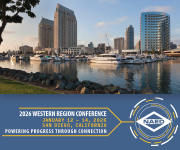By Brooke Stoddard
LEDs, being wholly different from incandescent and fluorescent lighting, come with a host of advantages. The two most celebrated are high efficiency and extreme longevity so that consumers will use far less power than with incandescent and fluorescent devices. Other advantages are: low maintenance; low incidence of breakage; ease of directability; and range of colors. With respect to fluorescent, LEDs turn on instantly, do not flicker, are recyclable, and do not contain mercury. The main drawback is cost. Another is diminished efficacy in warm environments. And there are technical challenges such as conversion to DC current, emitting a pleasant white light, and controlling heat. But both the Department of Energy (DOE) and private companies are working to lower the costs while boosting efficiency and overcoming technical problems.
Owing to their advantages, LEDs are gaining toeholds in a number of markets, and indications are that their market penetrations will only increase in both the short and long terms.
Markets tend to be of three kinds: Residential, Light Commercial, and Heavy Commercial, including Infrastructure and Auto.
Residential. LEDs are making headway in: ambient lighting; screw-base lamps; gardens and pathways; pendant lighting; under-counter and cove lighting; holiday lights; security lights; and flashlights. Taking into account OLED technology (Organic LEDs) the growing consumer market extends to smart phones, computer screens, TV monitors and similar displays.
Light commercial. LEDs are finding growing acceptance for ambient lighting in stores; accent, display, and counter lights; storefronts; holiday lights; security lighting; light curtains in shopping malls; lighting for hospitals, restaurants, nightclubs, and casinos; specialty lighting for exhibitions and trade shows; lighting in grocery store refrigeration and freezer sections; applications in concerts and entertainment venues; growing plants (lights can be made to emit wavelengths especially suited to a plant’s chlorophyll needs); internally lit fabrics (OLED), glowing wallpaper, and screen walls.
Heavy Commercial, Infrastructure, or Auto. LEDs are being used for ambient and task lighting in factories; government infrastructure settings such as parking lots, street lighting, and traffic signals; accent lighting for bridges; and auto interior accent lights as well as exterior functional and accent lights.
To look at a few applications somewhat more closely, in the Residential area LEDs are being made for replacing incandescent bulbs, compact fluorescent lighting, and fluorescent tubes. Cost is a major inhibitor to consumer acceptance in these markets, but in specialty areas LED devices are attractive to architects and interior designers, as well as the stylish-minded and innovation-lovers. Homeowners might also take to security, pathway, and holiday lighting because of low energy use and hardly any maintenance.
In the light commercial field (and by inference the residential field as well), progress has been demonstrated for screw-based bulbs. A 2010 Department of Energy CALiPER (Commercially Available LED Product Evaluation and Reporting) study in retail stores found highly variable results from screw-based bulbs, with some unable to meet pre-established performance standards. However, a CALiPER study the following year of bulbs purchased at the end of 2011 discovered greatly improved product in the three main categories of lumen output, coloration, and efficacy. There was also improvement in cost. Moreover, last year one manufacturer was producing an LED replacement bulb equivalent to a 60-watt conventional bulb that produced 910 lumens while consuming only 10 watts.
LED street lighting is also receiving increased attention. Los Angeles recently installed 140,000 street lighting LEDs, lowering its electricity bill by $7 million a year. It is looking to retrofit 70,000 street lamps in the project’s second phase. Las Vegas recently retrofit 42,000 street lights with LED ones, saying it is going to save 50% or $2 million a year in power bills as well as savings in reduced maintenance costs for years to come.
Tagged with Exclusive Feature, LED, lighting, OLED, tED




